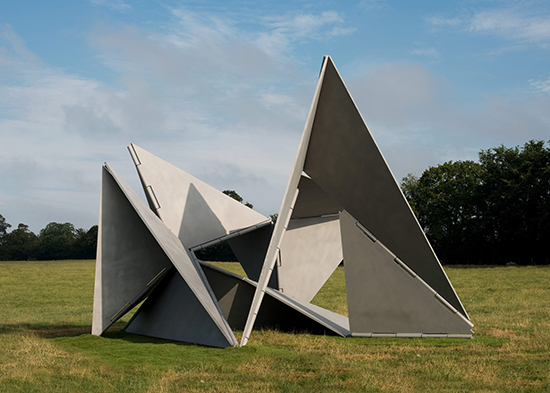Worldmaking:
Between Prometheanism & Perspectivism Instructor: José Antonio Magalhães - Luiza CrosmanProgram: History, Design & Worldmaking, Critical PhilosophyCredit(s): 1Date: July 27th, August 3rd, 10th, 17thTime: 14:00-16:30 ET

DESCRIPTION: The goal of this Seminar is to treat the question of planetary design at the often-polemical intersection of two contemporary streams of thought: On one side perspectivism, cosmopolitics, and/or the “ontological turn” and, on the other, prometheanism, neorationalism and/or left-accelerationism. This is structured on the basis of Eduardo Viveiros de Castro’s (EVC) text ‘On models and examples: Bricoleurs and engineers of the Anthropocene’, where he articulates a critique of geoengineering through the Levi-Straussian distinction between bricoleurs (who work with examples) and engineers (who work with models).
Drawing from tensions within EVC’s own text, we would like avoid a simple opposition to engineering (as the use of models-for), and explore the possibility of thinking of bricoleurs/examples and engineers/models as vectors within a spectrum. We will bring in the concept of the diagram as one which might serve to mediate between models and examples: Both of those would then appear not as extreme cases of more or less coded diagrams. Our goal will be, on the one hand, to distance ourselves from a mere rejection of engineering and technology in the navigation of climate catastrophe while, on the other, dissolving the stark opposition between promethean planetary engineering and supposedly localist perspectivist cosmopolitics.
This should allow us to learn something from the perspectivist/terran critique of geoengineering and the promethean elaboration of planetary-scale worldmaking. We will explore mixed concepts, such as Viveiros de Castro’s concept of geobricolage, or perhaps even a perspectivist take on (geo)engineering, via the notion of a bricolage- engineering spectrum, which is to say, an example-model spectrum mediated by the notion of the diagram.
Session 1: ENGINEERS AND BRICOLEURS
In this first session, we will determine our Seminar’s research problem by reading Eduardo Viveiros de Castro’s “On Models and Examples: Engineers and Bricoleurs in the Anthropocene.” We will ask what exactly is at stake between the prima facie conflicting positions of terran/perspectivist bricoleurs and inhuman/promethean
engineers. Viveiros de Castro emphasizes he does not want to posit engineering and model-making as essentially evil. Yet, at times, he seems to rely on a distinction between “model-of” and “model-for” to save the former at the latter’s expense. As an alternative, we will focus on his suggestion that models and examples are ultimately not discontinuous and pure opposites but rather vectors within a continuous bricolage-engineering spectrum.
Session 2: THE PROMETHEAN CASE FOR (GEO)ENGINEERING
Moving forward, we will look into how contemporary geoengineering is thought of and takes place, with concrete and speculative examples from geoengineering writings. We will discuss how the human/nature relation appears in prometheanism through Reza Negarestani’s call for norm revisionism, the practice of inference, and the interplay between thought (belief) and action (agency). This will be tested against other divides (social, epistemological, geopolitical), creating a sliding scale of what can be considered as human-engineered interventions. Through that, we will seek to delineate the relation between locality and globality regarding ecological issues and how each feeds back onto the other. This should start to create a multifaceted diagram of vectors of engineering and bricolage.
Session 3: THE MODEL-EXAMPLE SPECTRUM I: PERSPECTIVISM
In our third section, we will move back to the perspectivist side to ask how the Deleuzo-Guattarian concept of diagram may allow us to mediate between models and examples, picturing them respectively as more and less coded diagrams. We will read Viveiros de Castro’s work on metaphysical perspectivism as a paradigm of bricoleur thought, with special attention to his concept of the body as determining the differentiation of perspectives. The proximity between this concept of the body and the diagram will be key in obtaining a perspectivist take on the bricolage/engineering spectrum, introducing models within a perspectivist framework and, thus, cannibalizing the enemy engineer as a potential geobricoleur.
Session 4: THE MODEL-EXAMPLE SPECTRUM II: DIAGRAMMING THE COMMONS
Focusing on Patricia Reed’s diagrammatic propositions for navigating different scales, our last session will focus on thinking through how models and examples can be traced in different areas of the same spectrum through the plastic topology of the diagram. Through this approach, we will look into how models can be speculative tools for designing possibilities that are not yet existent. We will look into the conceptual differentiation between “firmative speculation,” which doesn’t account for the realities of a speculative territory, and “affirmative speculation,” which allows for bifurcation and actualizations of the model by a feedback mechanism with the territory. This recursivity will allow us to bridge the example/model gap and highlight what geobricolage can absorb from engineering.
IMAGE: Lygia Clark, Fantastic Architecture, 1963-2013.
To see The New Centre Refund Policy CLICK HERE.
To see The New Centre Refund Policy CLICK HERE.